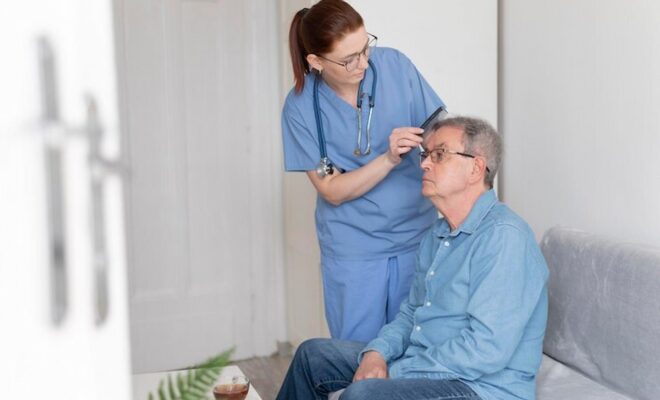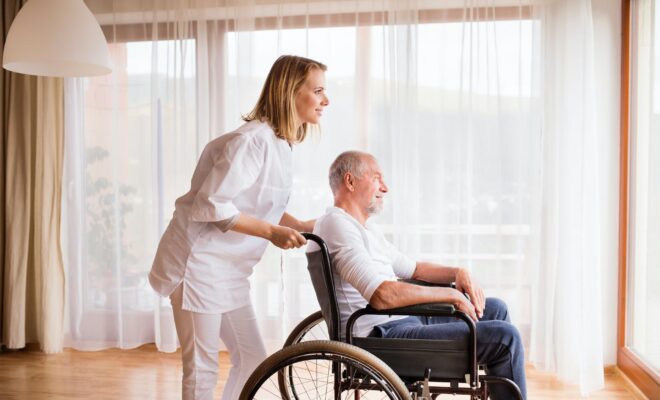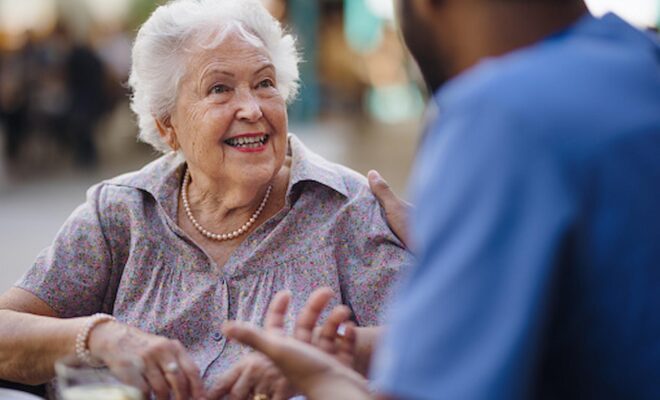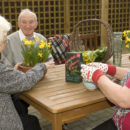Innovative Technologies Transforming Care Homes: From Smart Monitoring to Virtual Reality

The landscape of elderly care is evolving rapidly, driven by technological advancements that promise to revolutionise how we support and care for our ageing population. One such facility leading this transformation is nestled in the heart of a vibrant community. Committed to providing exemplary care to its residents and embracing innovative technologies to enhance their quality of life, this facility stands out in the field. In this blog post, we will explore how Histon Care Home harnesses the power of intelligent monitoring, robotics, telemedicine, and virtual reality to create a more personalised, efficient, and enriching care experience for its residents.
Intelligent Monitoring: Enhancing Safety and Well-being
Intelligent monitoring systems have emerged as invaluable tools in elderly care, offering real-time insights into residents’ health and safety. At Histon Care Home, state-of-the-art sensor technology is deployed throughout the facility to monitor various parameters such as movement, temperature, and sleep patterns. These non-intrusive sensors discreetly collect data, which is then analysed by sophisticated algorithms to detect any anomalies or signs of distress. By proactively identifying potential issues, staff can intervene promptly, reducing the risk of accidents or medical emergencies. Moreover, intelligent monitoring allows for a more holistic understanding of each resident’s needs, enabling personalised care plans tailored to their unique requirements.
Robotics: Assisting with Daily Tasks and Social Interaction
Robotic companionship revolutionises how elderly individuals interact with their environment, assisting with daily tasks and fostering social engagement. At our care facility, robotic assistants are integrated into various aspects of resident care, from medication reminders to mobility assistance. These robots have advanced artificial intelligence capabilities, enabling them to learn and adapt to residents’ preferences over time. Beyond practical assistance, robotic companions also serve as companions, engaging residents in meaningful interactions and providing companionship during moments of solitude. By alleviating the burden of mundane tasks and promoting social interaction, robotics play a crucial role in enhancing the overall well-being of residents at our care facility.
Telemedicine: Facilitating Remote Healthcare Services
In an era defined by connectivity, telemedicine has emerged as a vital tool for delivering healthcare services remotely, especially in elderly care. Our care facility’s telemedicine platforms enable residents to consult with healthcare professionals without needing physical travel. Through video conferencing and remote monitoring, residents can receive timely medical advice, follow-up appointments, and even specialist consultations from their rooms. It eliminates the logistical challenges associated with traditional healthcare visits and enhances access to specialised care for residents with mobility issues or chronic conditions. By integrating telemedicine into its care model, our care facility ensures that residents receive comprehensive medical support tailored to their needs.
Virtual Reality: Stimulating Cognitive Function and Enhancing Quality of Life
Virtual reality (VR) technology holds immense potential for enhancing the quality of life for elderly individuals, offering immersive experiences that stimulate cognitive function and provide therapeutic benefits. At our care facility, VR technology transports residents to virtual environments that evoke fond memories, facilitate reminiscence therapy, and promote relaxation and mental well-being. Whether taking a virtual stroll through a familiar neighbourhood or embarking on a virtual travel adventure, residents at our care facility can escape the confines of their physical surroundings and engage in enriching experiences that uplift their spirits and stimulate their minds. By leveraging VR technology as a tool for therapeutic recreation, our care facility empowers residents to maintain a sense of autonomy, purpose, and joy in their daily lives.
Personalised Communication: Tailoring Engagement and Social Interaction
Communication lies at the heart of quality elderly care, fostering meaningful connections and promoting emotional well-being. At Histon Care Home, innovative communication technologies facilitate personalised engagement and social interaction among residents. Digital platforms and applications create virtual communities where residents can connect with family members, friends, and fellow residents, regardless of physical distance. Residents can stay connected with their loved ones through video calls, messaging services, and social media platforms and maintain a sense of belonging and social connectedness. Additionally, personalised communication tools enable staff to send updates, reminders, and personalised messages to residents, enhancing communication and fostering a sense of community within the care home.
In conclusion, this facility stands as a shining example of how innovative technologies can be seamlessly integrated into the fabric of elderly care, enriching the lives of residents and enhancing the efficiency of care delivery. From intelligent monitoring systems prioritising safety and well-being to robotic companions providing assistance and companionship, our care facility leverages diverse technological solutions to create a holistic and personalised care experience. Through telemedicine, residents can access comprehensive medical support regardless of physical limitations, while virtual reality technology offers therapeutic recreation and cognitive stimulation. As elderly care continues to evolve, our care facility remains committed to embracing cutting-edge technologies that empower residents to live fulfilling and dignified lives.
In the journey towards redefining elderly care, a beacon of innovation, compassion, and excellence shines, inspiring others to embrace the transformative power of technology in supporting our ageing population.













